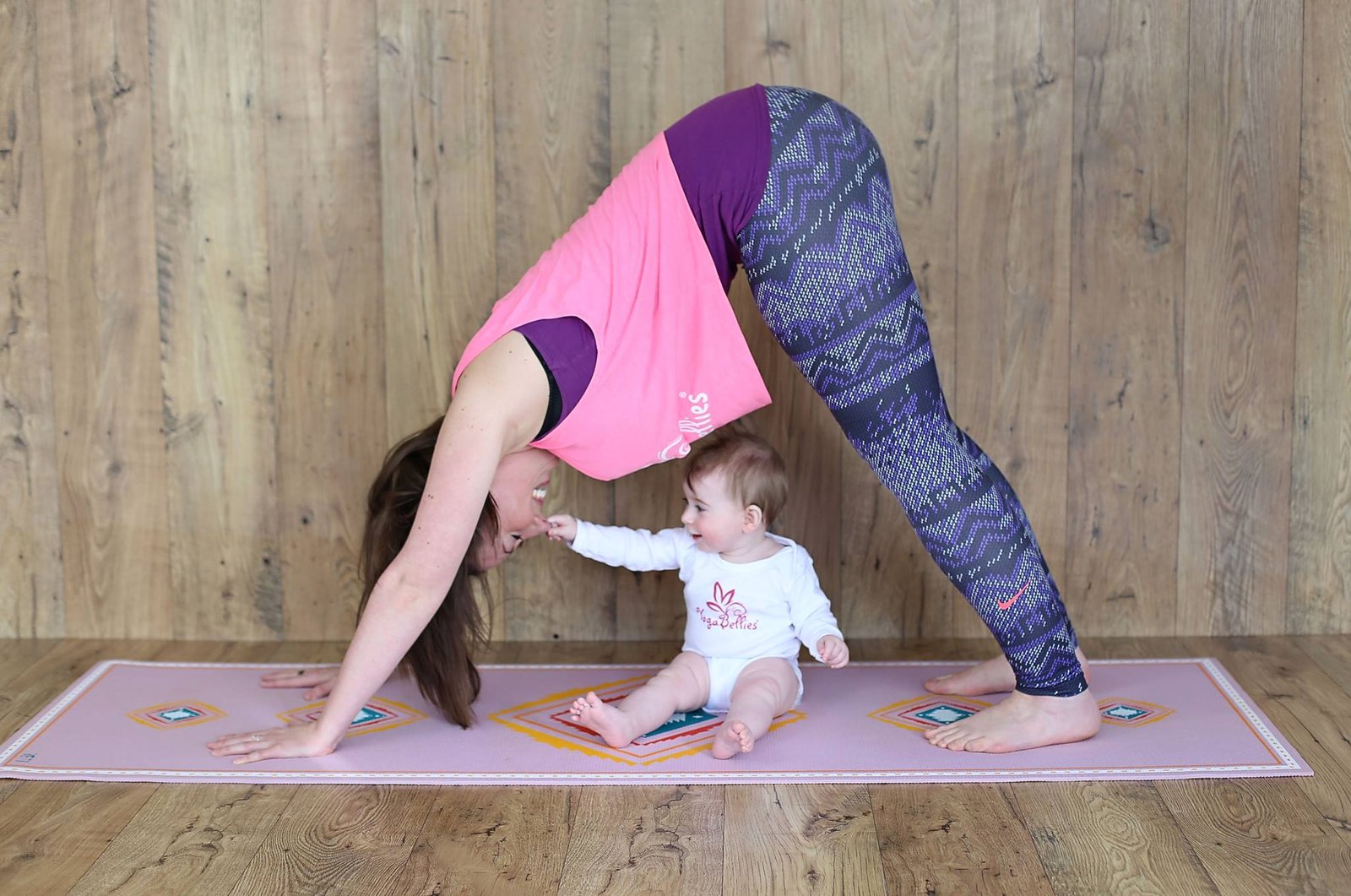
Just had a baby? Congratulations! Consider trying postnatal yoga. It’s a fun way to gradually get your body back into great shape. It can soothe the physical and mental stresses of being a new mum and help your body recuperate from the challenges of birth.
What Is Postnatal Yoga?
Postnatal yoga is a yoga style that is designed specifically for new mums. It embraces calming and restorative poses. The poses help enhance vitality and increase energy while gently focusing on flexibility and strength.
Many of the poses focus on the pelvic floor and your core muscles – in YogaBellies classes we focus on the BAP’s – Back Abs and pelvic Floor – which can become weakened during pregnancy and delivery. It’s a transitional yoga to be practiced only during the first few weeks and months after delivery. Once your body is “back to normal” you may want to transition to other yoga styles designed to meet your new and changing goals.
Who Can Practice Postnatal Yoga?
Because postnatal yoga is a gentle yoga style aimed at restoring form and function and increasing vitality, it can be practiced by anyone. Whether you had an easy, or difficult, vaginal delivery or underwent a C-section, you can practice postnatal yoga. Generally, it’s recommended to wait to begin postnatal yoga until after you’ve stopped bleeding.
Postnatal Yoga Poses
Because it is a gentle yoga, it’s a practice that you can do at home. The poses are designed to open your hips, improve strength in your pelvic floor, lengthen your spine and just make you feel good. You can squeeze a few poses in while your baby naps or first thing in the morning before the house wakes up. Here are a few poses to try:
Cobra pose – Lie on the floor on your belly. Raise your shoulders and abdominals off the floor by bracing your hands about shoulder width apart. You’ll feel a nice stretch in your low back. Hold the pose for about five breaths while looking straight ahead. Keep your arms soft and relax back to the floor.
Wide leg forward bend – This pose stretches your hamstrings, lower back, and shoulders. Place your feet wider than shoulder width apart. Keep your knees soft and bend forward at the hips. Rest your hands on the floor, elbows bent if possible. Hold the position for five breaths and then slowly stand up. Be careful to not get light-headed or dizzy.
Modified downward dog – Downward dog is a pose that places both your hands and feet on the floor. Your hands are usually several feet in front of your feet. With the modified downward dog, the angle of your body may be reduced. Instead of placing your hands on the floor, you’ll rest your weight on your forearms. Keep them parallel. Breathe. Hold your eyes on your ankles or feet and enjoy the stretch of your hamstrings and low back.
Other poses to consider include:
* Lizard pose, which opens your hips
* Pigeon pose, another hip opener
* Camel pose, which stretches your spine and opens your hips
* Plow pose, a restorative pose that opens your spine and increases vitality
* Child’s pose, another restorative and calming pose
New mums deserve special attention and can benefit from a simple postnatal yoga practice. If you’ve just had a baby, take a few minutes every day to restore your mind and body. Being a mum is challenging; make it a bit easier by treating yourself well.
Find your local YogaBellies for Mum & Baby class on our ‘find a class’ page.

0 Responses on Post Natal Yoga for Mummies NOT Dummies!"